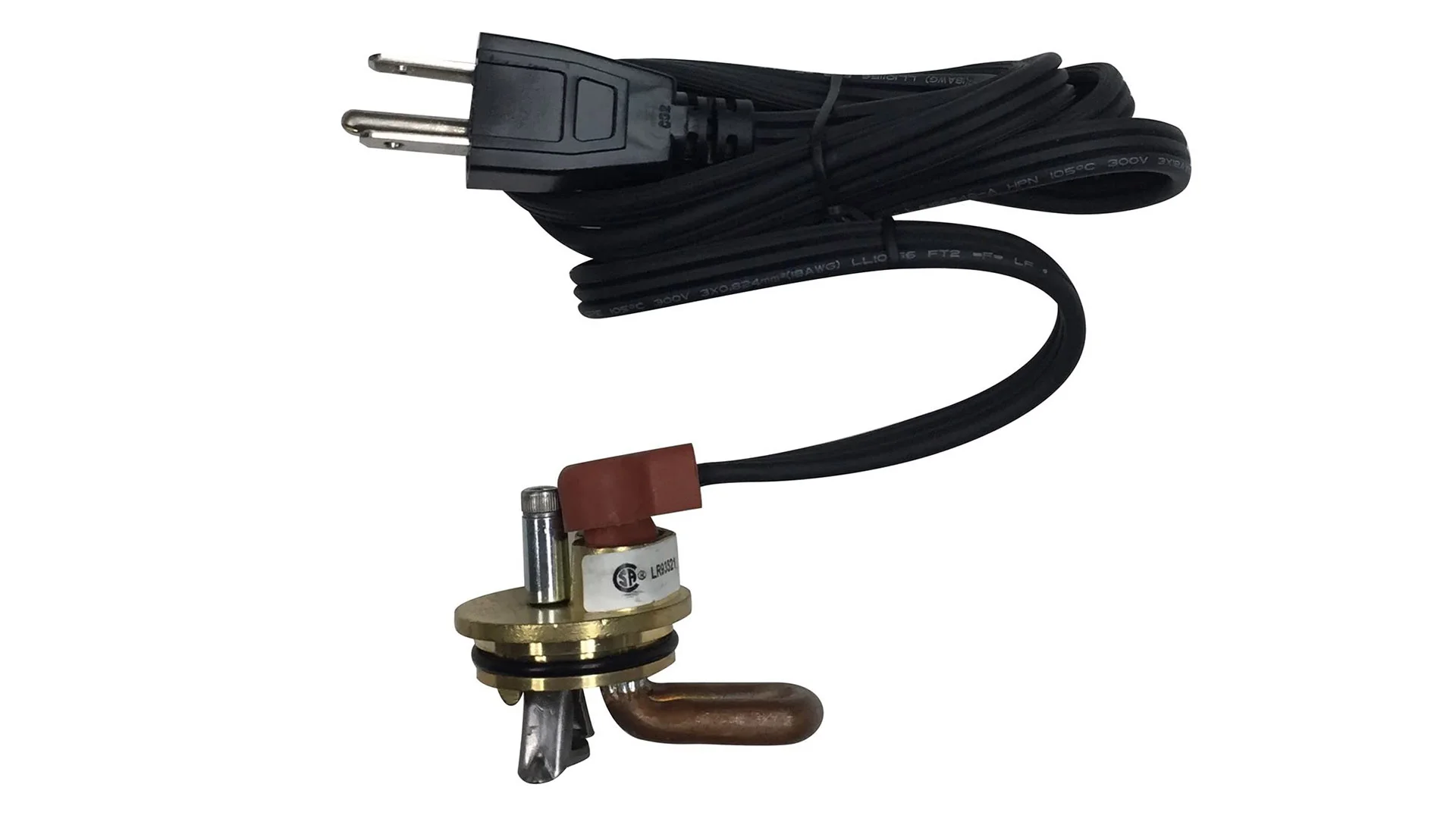Are you tired of the constant strain on your engine caused by your air conditioning system? Many car owners face the challenge of reducing the AC load on their engine to improve its performance and longevity. In this article, we will explore some effective techniques to help you decrease the strain on your engine and enhance your overall driving experience.

So, how can you reduce the load on your engine caused by the AC system? To alleviate this strain, follow these helpful techniques listed in this article
How Does AC Work In Engine?
The operation of an air conditioning (AC) system within a vehicle’s engine involves a complex yet fascinating process that results in the comfortable cooling of the interior.
Knowing how the AC system functions is essential to appreciate the impact it has on the engine’s load and overall vehicle performance.
- Compressor: The AC system’s heart is the compressor, typically driven by a belt connected to the engine’s crankshaft. The compressor’s primary function is to compress the low-pressure, low-temperature refrigerant gas received from the evaporator.
- Condenser: The high-pressure, high-temperature refrigerant gas from the compressor flows into the condenser, usually located in front of the vehicle’s radiator. Here, the refrigerant releases heat and transforms into a high-pressure liquid due to the flow of air from the vehicle’s forward motion and the cooling effect of the condenser.
- Receiver-Dryer or Accumulator: Depending on the AC system’s design, it may contain a receiver-dryer or an accumulator. These components serve to filter and dry the refrigerant, ensuring it remains free of contaminants and moisture, which can be detrimental to the system.
- Expansion Valve or Orifice Tube: The high-pressure liquid refrigerant then passes through an expansion valve or orifice tube. These components cause the refrigerant to rapidly expand, resulting in a sudden drop in pressure and temperature. This transformation allows the refrigerant to absorb heat from the vehicle’s interior.
- Evaporator: The cold, low-pressure refrigerant now enters the evaporator, typically located within the vehicle’s dashboard. Air from the cabin is blown over the evaporator’s coils, and the refrigerant absorbs heat from this air, cooling it in the process. This cooled air is then directed into the vehicle’s interior through the vents.
- Return to Compressor: After absorbing heat from the cabin air, the refrigerant returns to the compressor in a continuous cycle, repeating the process until the desired interior temperature is achieved.
This continuous cycle of compression, condensation, expansion, and evaporation allows the AC system to provide cool air to the vehicle’s interior. However, this process also places an additional load on the engine, primarily through the compressor, which is mechanically linked to the engine’s power source.
The engine must expend energy to drive the compressor, and this energy consumption affects both fuel efficiency and overall engine performance. Therefore, finding ways to reduce the AC load on the engine is essential for optimizing your vehicle’s efficiency and minimizing its environmental impact.
How To Reduce AC Load On Engine
Learning how to reduce the AC load on your engine is not only beneficial for your wallet but also for the environment. By employing a combination of smart practices and vehicle maintenance, you can strike a balance between staying cool and optimizing your car’s performance.
1. Use the AC Wisely
The simplest way to reduce the AC load is to use it judiciously. Only turn it on when necessary. On moderately warm days, consider rolling down the windows to allow fresh air to circulate within the cabin.
Avoid setting the AC to its coldest setting right away. Start with a slightly higher temperature setting and gradually lower it as the cabin cools down. This reduces the initial strain on the AC compressor.
Whenever possible, park your vehicle in shaded areas or use sunshades to prevent excessive heating of the interior. A cooler cabin temperature at the outset means the AC won’t have to work as hard when you start driving.
2. Maintain Your AC System
Periodically service your vehicle’s AC system to ensure it operates at peak efficiency. This includes checking for refrigerant leaks, cleaning or replacing filters, and inspecting critical components such as the compressor and condenser.
Ensure that your car’s cabin air filter is clean and unblocked. A clogged filter restricts airflow, causing the AC to work harder to push air through.
3. Utilize Ventilation Mode
Once the cabin has reached a comfortable temperature, switch the AC to ventilation mode. This mode recirculates the already-cooled cabin air, reducing the need for the compressor to constantly chill incoming air.
4. Strategic Parking
Choose parking spots strategically. Opt for shaded areas or employ sunshades on hot days to lessen the initial heat buildup inside your car. This reduces the workload on the AC upon starting your journey.
5. Pre-Cooling the Cabin
If you have access to electricity or an external power source, consider pre-cooling the cabin before driving. This can be achieved using battery-powered fans or running the AC while your vehicle is stationary.
6. Tinted Windows
Tinted windows not only provide privacy but also reduce the amount of solar heat that enters your vehicle. This eases the burden on your AC system when cooling the interior.
7. Adjust Fan Speed
When you initially start the AC, use a higher fan speed to cool the cabin quickly. Once the desired temperature is reached, switch to a lower fan speed to maintain comfort while reducing the load on the compressor.
8. Avoid Excessive Idling
Idling your vehicle with the AC running consumes fuel and places unnecessary stress on the engine. If you anticipate a prolonged stationary period, consider turning off the engine and restarting it as needed.
10. Consider Hybrid or Electric Vehicles
Hybrid and electric vehicles often feature more advanced AC systems that are less reliant on the internal combustion engine. Consider switching to these options if reducing AC load is a top priority for you.
RELATED: Are Winter Tires Worth the Money? – A Comprehensive Guide 2023
Benefits of Reducing AC Load
Reducing the load on your car’s air conditioning (AC) system comes with a range of benefits that can positively impact your driving experience, your vehicle, and your finances. Here are some key advantages of reducing AC load:
- Improved Fuel Efficiency: One of the most significant benefits is improved fuel efficiency. The AC system places an additional load on your engine, causing it to work harder and consume more fuel. By reducing the AC load, you can lower fuel consumption, which is not only good for your wallet but also for the environment as it reduces carbon emissions.
- Extended Engine Life: Reducing the strain on your engine by minimizing the use of the AC can contribute to a longer engine life. Over time, excessive AC usage can lead to wear and tear on engine components, potentially leading to costly repairs or replacements.
- Cost Savings: Using the AC less frequently or more efficiently can lead to cost savings in terms of fuel expenses. Additionally, proper AC maintenance and reduced wear and tear on the system can save you money on AC repairs and replacements.
- Enhanced Comfort: While the goal is to reduce AC load, adopting smart practices doesn’t mean sacrificing comfort. By using the AC wisely and pre-cooling the cabin when possible, you can still enjoy a comfortable and cool interior without overworking the system.
- Reduced Environmental Impact: Decreasing the load on your AC system aligns with eco-friendly driving practices. It helps lower greenhouse gas emissions, contributing to a greener and more sustainable approach to transportation.
- Less Strain on Electrical System: The AC system consumes electrical power, which can place strain on the vehicle’s electrical system, particularly in older cars. By reducing AC load, you can help extend the life of your vehicle’s electrical components.
- Better Handling and Performance: When your engine isn’t working as hard to power the AC, you may experience better handling and performance, especially during acceleration and while climbing hills.
- Reduced Risk of Breakdowns: Overworking the AC system can lead to overheating and breakdowns, especially in hot weather. By reducing AC load, you decrease the risk of unexpected malfunctions and the associated inconveniences.
- Extended AC System Lifespan: Regular maintenance and reduced usage can extend the lifespan of your AC system. This means you won’t have to replace or repair the AC components as frequently, saving you money in the long run.
- Minimized Carbon Footprint: Reducing AC load contributes to a smaller carbon footprint by reducing fuel consumption and associated emissions. This eco-conscious approach aligns with efforts to combat climate change and reduce air pollution.
- Enhanced Cabin Air Quality: Using the ventilation mode when appropriate, instead of the AC, allows fresh air to circulate through the cabin. This can lead to improved indoor air quality, reducing the reliance on the AC to filter and cool air.
How Do I Optimize My Car AC?
Optimizing your car’s air conditioning (AC) system ensures efficient cooling while minimizing the load on your engine. Here are some tips to help you optimize your car’s AC:
- Use the Ventilation Mode: When starting your car on a hot day, consider using the ventilation mode (fan without AC) initially to expel hot air from the cabin. Once the hot air is mostly gone, switch to AC for cooling. This reduces the initial load on the AC system.
- Park in the Shade: Whenever possible, park your car in the shade or use a sunshade to block direct sunlight. This prevents your car’s interior from overheating and reduces the amount of cooling required.
- Pre-Cool the Cabin: If you can, pre-cool the cabin by running the AC at a higher fan speed and lower temperature for a few minutes before driving. Once the interior is cooler, you can reduce the AC settings, decreasing the load on the system.
- Maintain Your AC System: Regularly service your AC system to ensure it operates efficiently. This includes checking refrigerant levels, cleaning or replacing filters, and inspecting for leaks or damaged components.
- Use Recirculation Sparingly: Recirculation mode is helpful for cooling the cabin faster, but it can lead to stale air if used excessively. Use it initially to cool down the car, then switch to fresh air mode to maintain air quality.
- Set the Temperature Wisely: Avoid setting the AC to the lowest temperature. A moderate setting (around 72-74°F or 22-23°C) is usually comfortable and consumes less energy than maximum cooling.
- Use the Rear Window Defroster: If your car has a rear window defroster, use it in combination with the ventilation mode to remove hot air from the cabin more quickly before using the AC.
- Regularly Clean the Cabin: Keeping the interior clean, including the dashboard and seats, can help reflect heat and maintain a cooler cabin temperature, reducing the need for excessive AC use.
- Drive With Windows Down First: On cooler days, consider driving with the windows down initially to let hot air escape. Once the cabin is comfortable, you can roll up the windows and use the AC more efficiently.
- Turn Off the AC Before Shutting Off the Engine: To prevent unpleasant odors and moisture buildup in the AC system, turn off the AC a few minutes before turning off the engine. This allows the evaporator to dry out.
- Monitor AC Usage: Pay attention to your AC usage and try to strike a balance between comfort and efficiency. Avoid leaving the AC on when it’s not needed.
- Use Sunshades or Window Tints: Sunshades for your windshield and window tints can significantly reduce the amount of heat that enters the car, reducing the workload on the AC.
- Drive With the Windows Open at Low Speeds: At lower speeds, driving with the windows open can be more fuel-efficient than using the AC. Save the AC for highway speeds when open windows create drag.
Conclusion
Reducing the AC load on your engine is not only beneficial for your car’s performance but also for your comfort and fuel efficiency. By following the tips and techniques mentioned in this guide, you can strike a balance between staying cool on hot days and minimizing the strain on your vehicle’s engine.
Remember to use the ventilation mode, park in the shade, and pre-cool the cabin when possible. Regular maintenance of your AC system is crucial, as is using recirculation mode sparingly and setting the temperature wisely.
Additionally, keeping your car’s interior clean, using window treatments, and monitoring AC usage can all contribute to a more efficient and comfortable driving experience.



